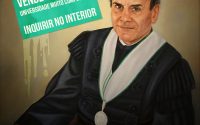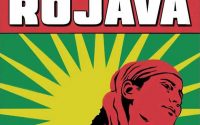Venezuela // “Humanitarian” circus at the Colombian border~ 4 min
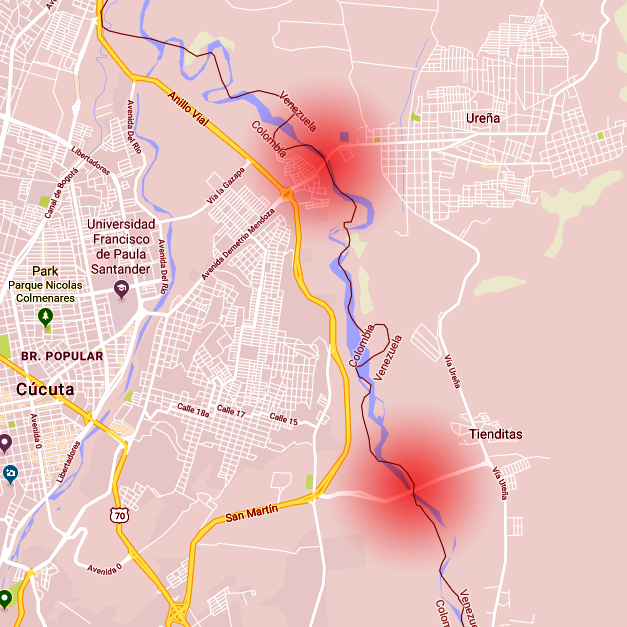
When Juan Guaidó announced that US provided “humanitarian aid” would be delivered on February 23, it became beyond predictable that we would see a circus at the border. The intent was clearly to generate further pretexts for additional direct intervention against Venezuela.
Here are the main events of the day, as seen by serious journalists and other organizations operating on the ground.
How it happened
Juan Guaidó began his day by crossing the border into Colombia, despite the Supreme Court prohibiting him from abandoning the country. He was welcomed by the Colombian president, Ivan Duque, in order to receive the “aid” sent by Elliot Abrams, special US envoy to Venezuela and famous supporter of far-right death squadrons all over Latin America.
Guaidó once again made an appeal to the military to switch sides which, barring a few isolated cases, had no effect on the majority of forces. He also announced that the “aid” had already entered through both the Brazilian and Colombian borders. Both assertions would be proven false.

The morning’s first relevant act saw two armored cars carrying three Bolivarian National Guard deserters cross one of the bridges towards Colombia, knocking down barriers.
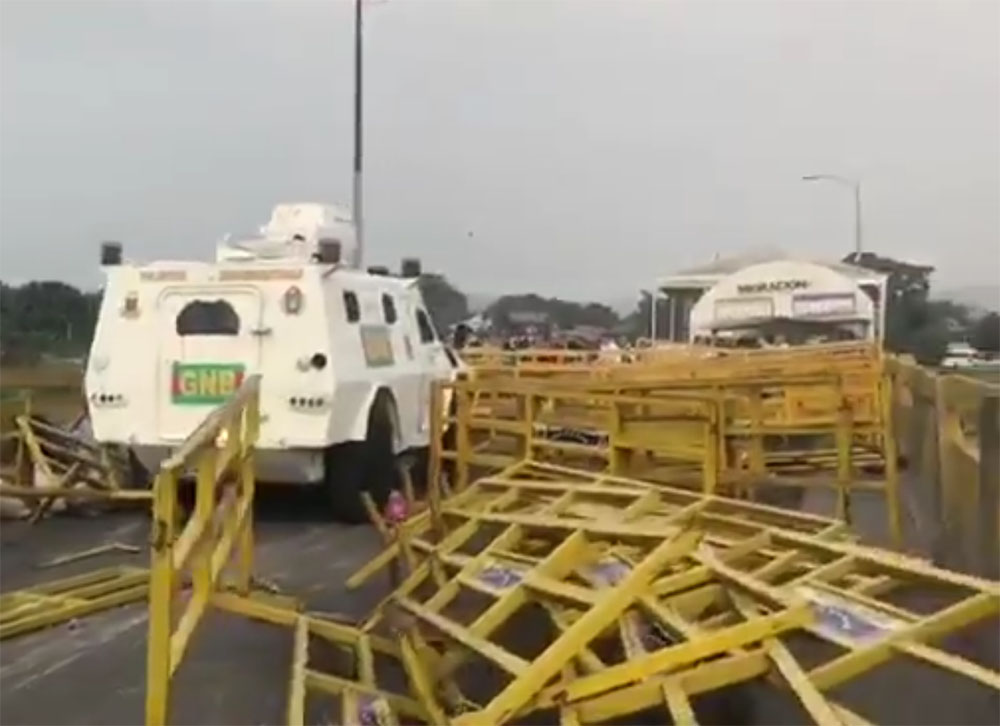
Chilean photojournalist Nicole Kramm and a Venezuelan police agent were wounded. According to witnesses, the national guards were welcomed at the other side of the border with the words “they’re ours, don’t shoot”. Waiting for them was National Assembly deputy José Manuel Olivares.
Guaidó accused government supporters of burning trucks carrying “humanitarian aid” at the Francisco de Paula Santander bridge in Ureña. Other observers noted the prevalence of opposition members heading towards the locale carrying gas. Drone images make it clear that the truck was still on the Colombian side of the border, surrounded by opposition supporters.
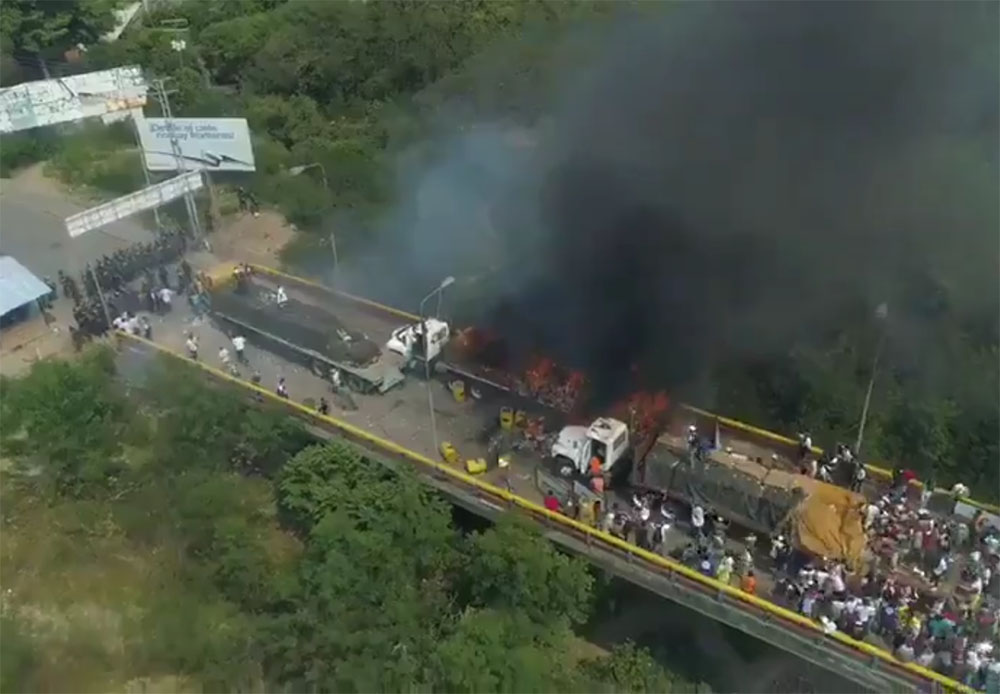
This episode seems to have turned into the focus of western propaganda. It is being used to accuse the Venezuelan government (“Maduro’s regime”) of crimes against humanity.
Guaidó then requested support from the “international community” once again, without which he would be an irrelevant figure. Maduro terminated diplomatic relations with Colombia and gave diplomatic staff 24 hours to leave the country.
Several conflict episodes were registered all afternoon between opposition groups and the military personnel blocking the border. Tear gas was deployed. During one of these episodes, the opposition apparently captured a government bus and set it on fire during attempts to use it as a flaming ram against the Venezuelan troop lines.
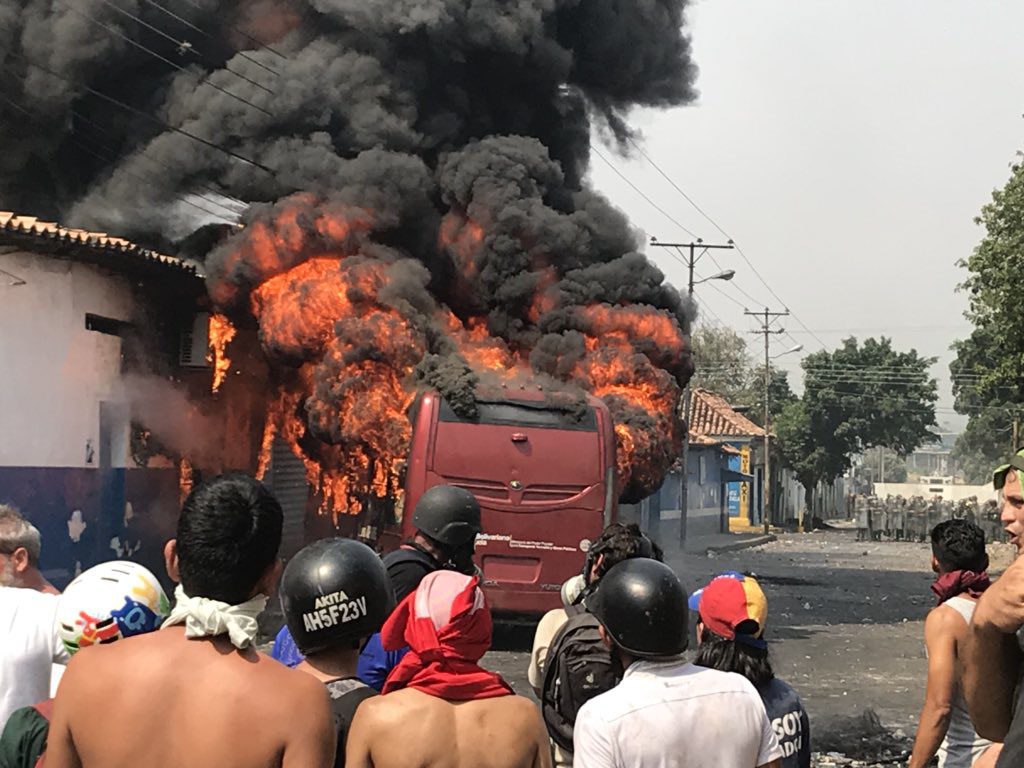
Colombian drones were seen flying overhead throughout the day. Several opposition members also used Red Cross jackets, against the organization’s wishes and ignoring its refusal to participate in the faux humanitarian aid delivery.
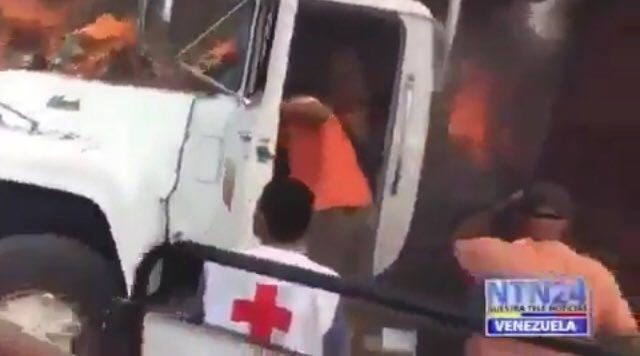
The suspicions held by the Red Cross that the aid itself was irrelevant were confirmed by declarations coming from Eduardo González, head of the National Unit for Colombian Disaster Risk Management, which is coordinating aid delivery with USAID and NGO’s. According to him, there is no medicine amongst the aid, only medical material such as gloves and syringes.


